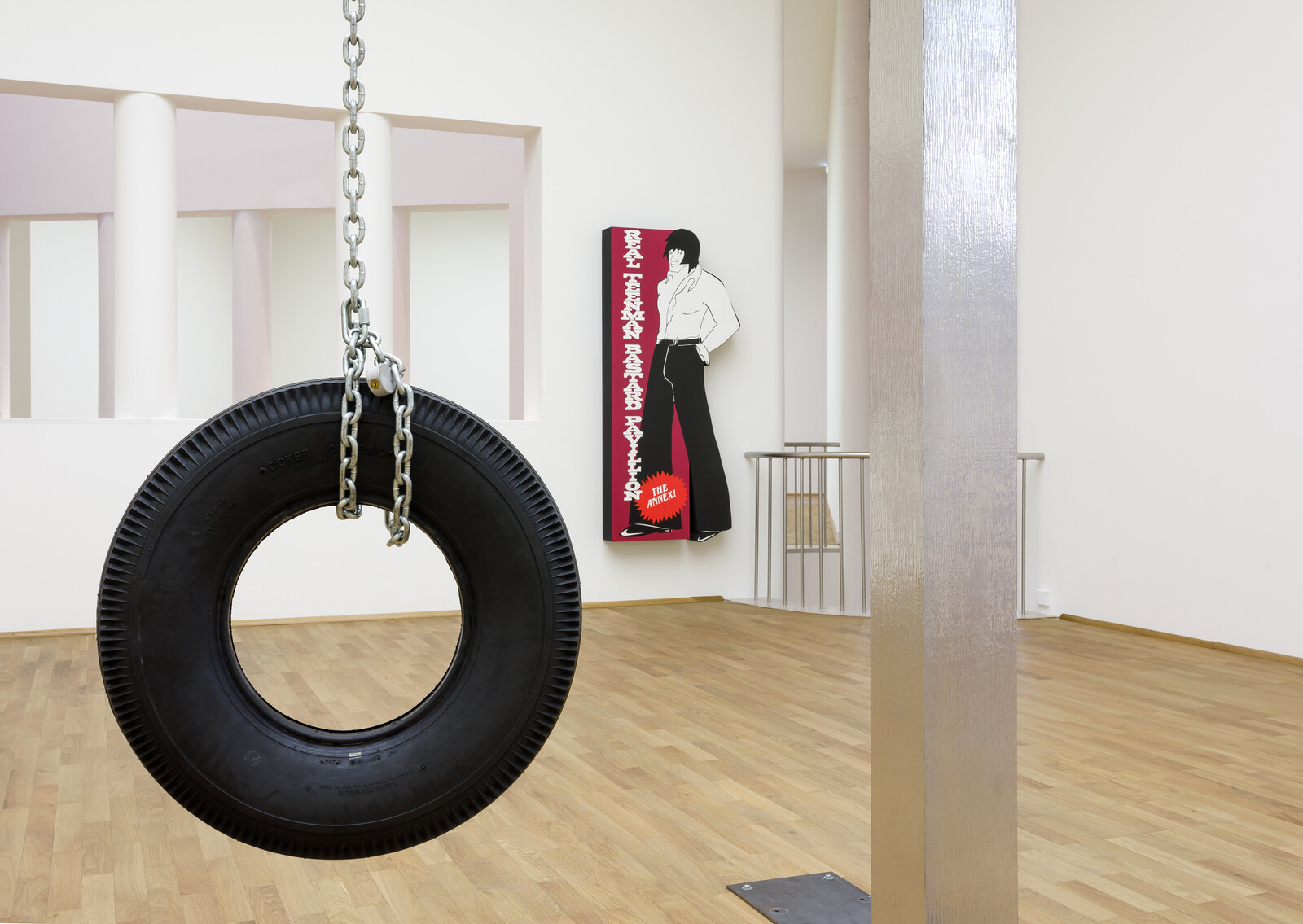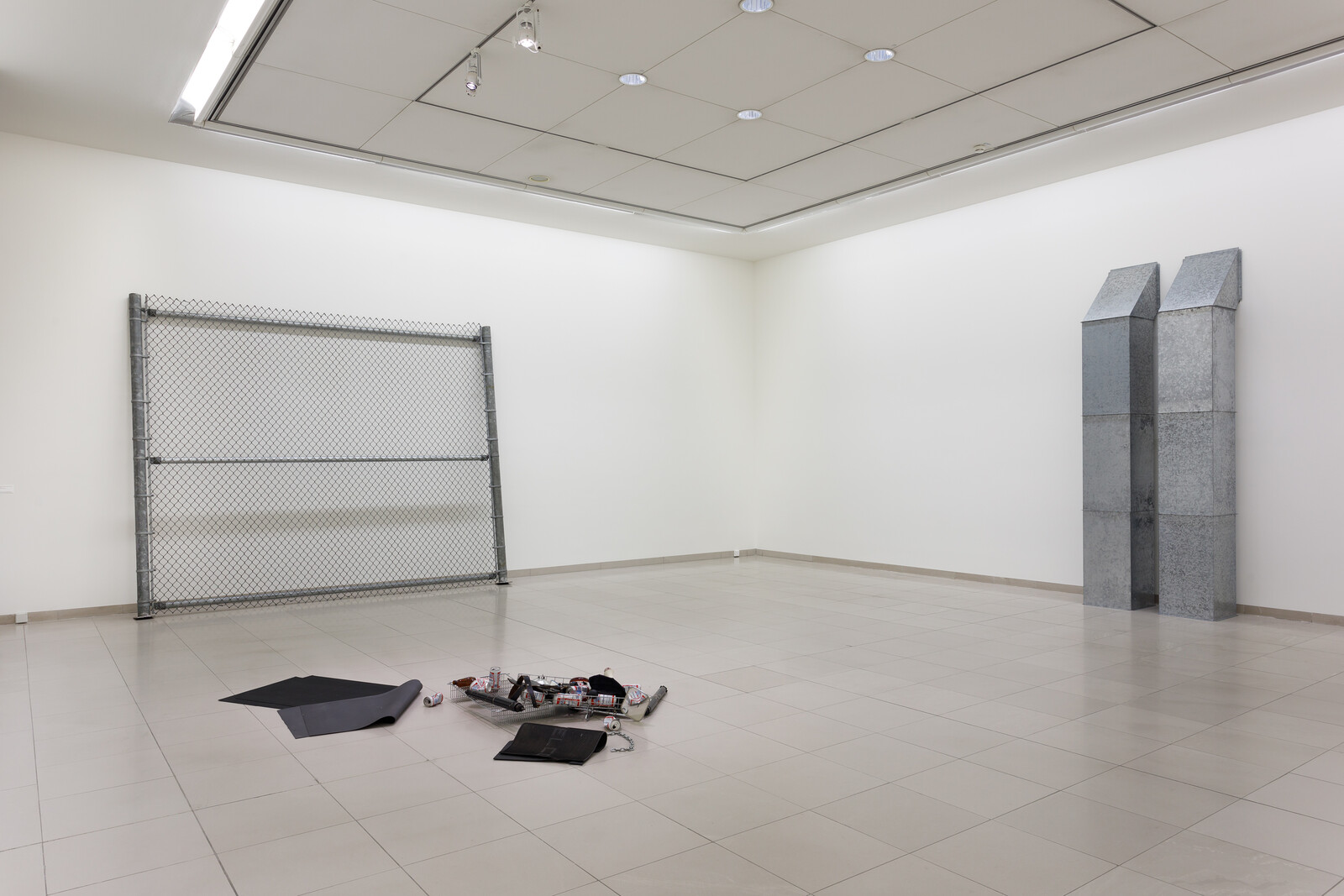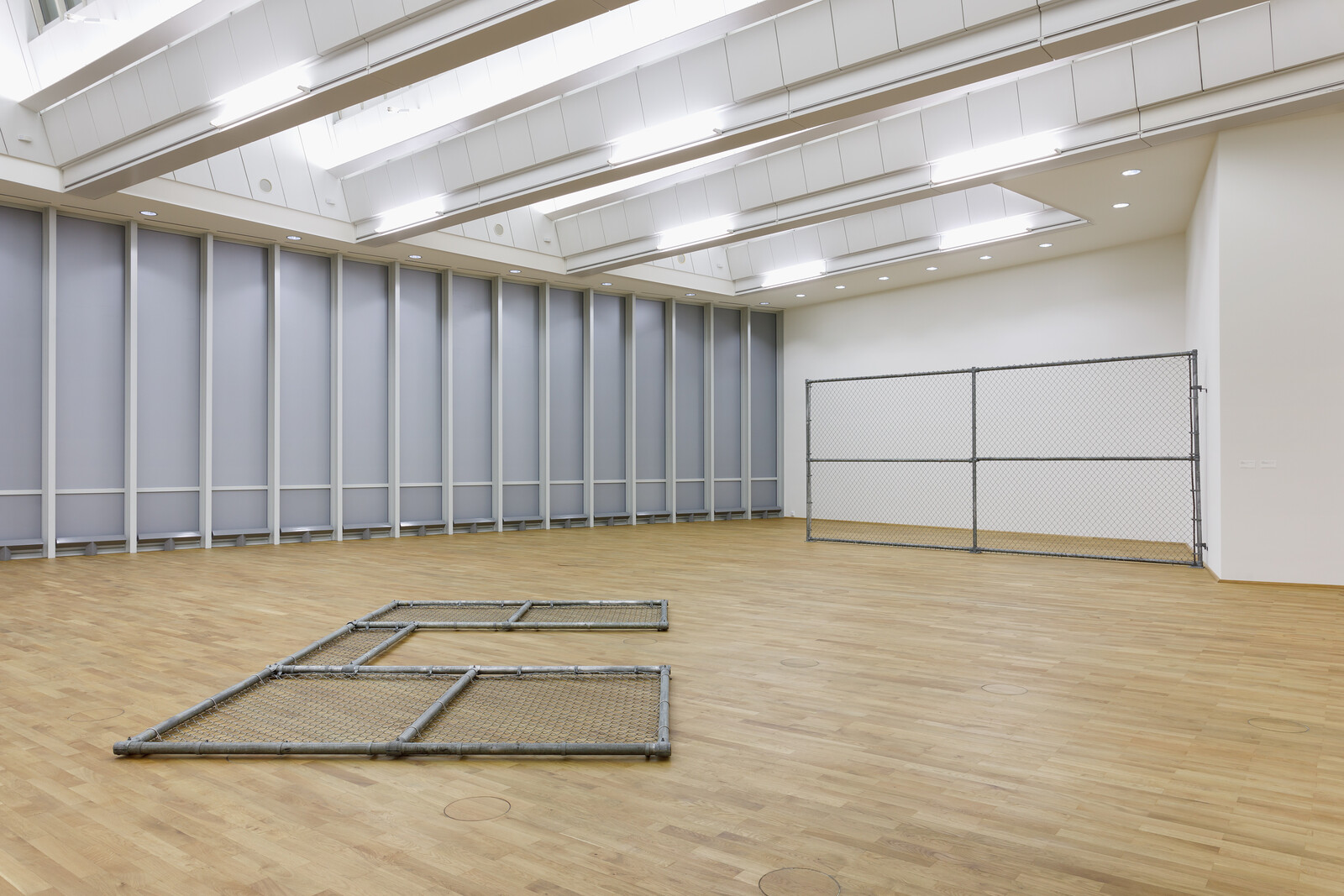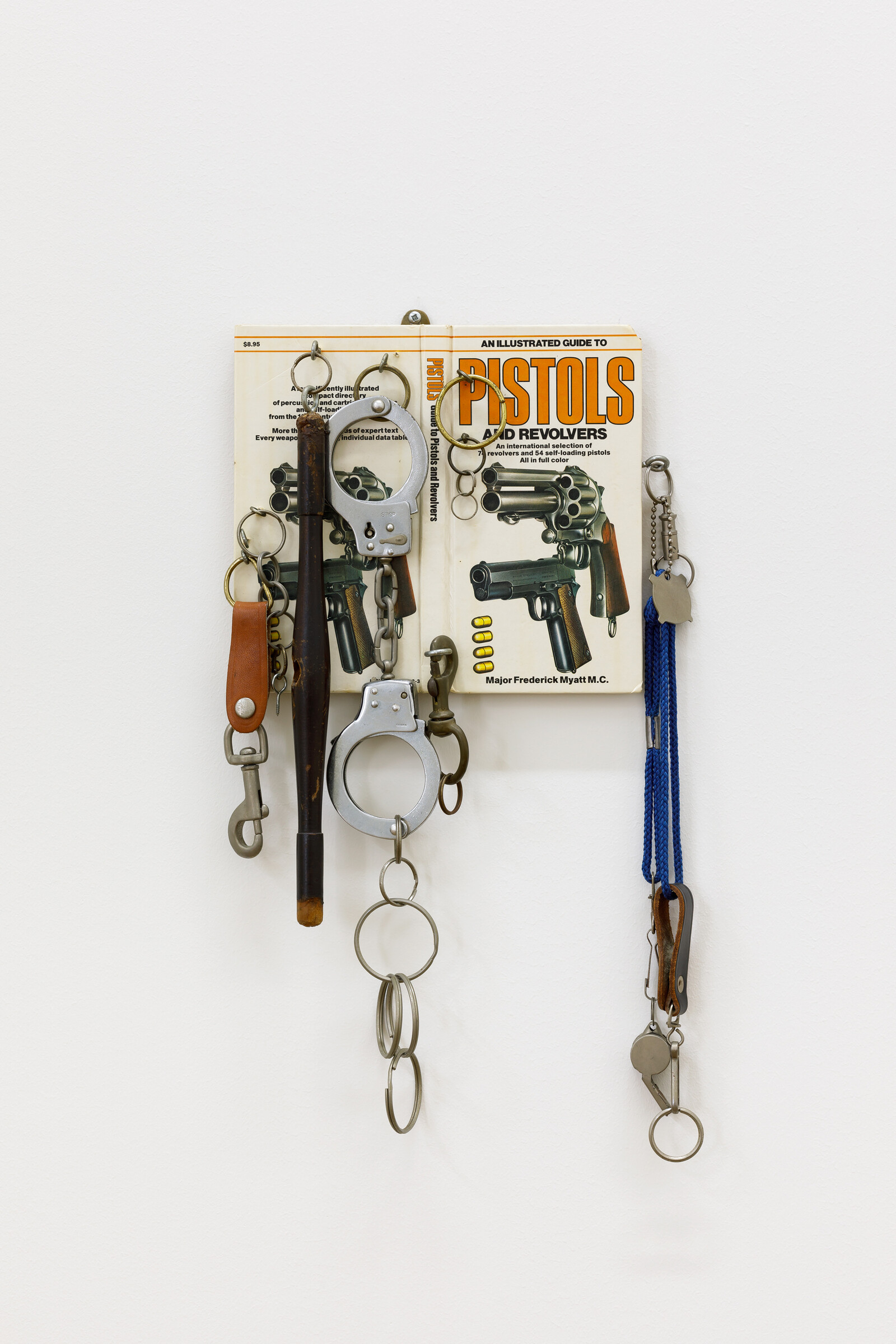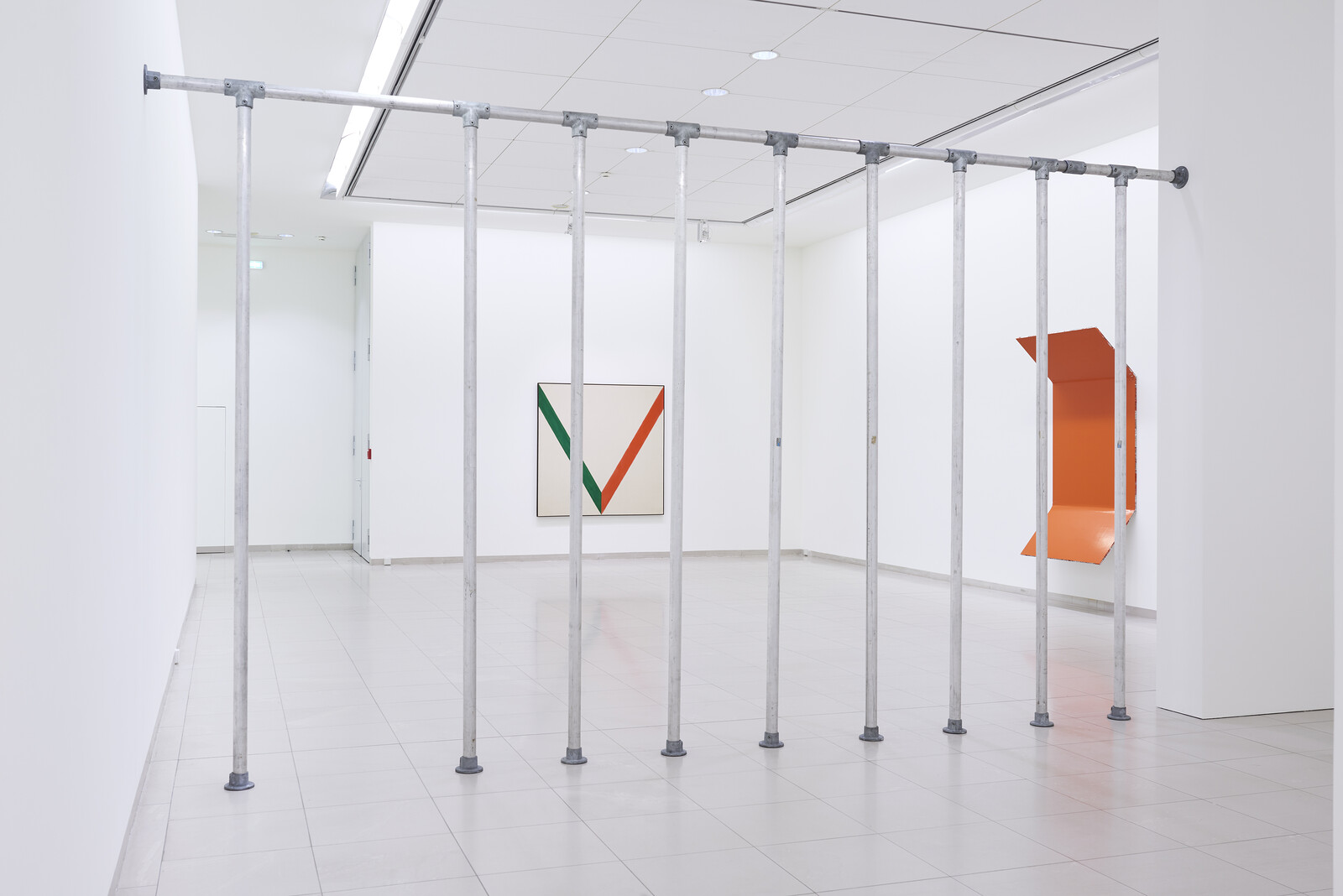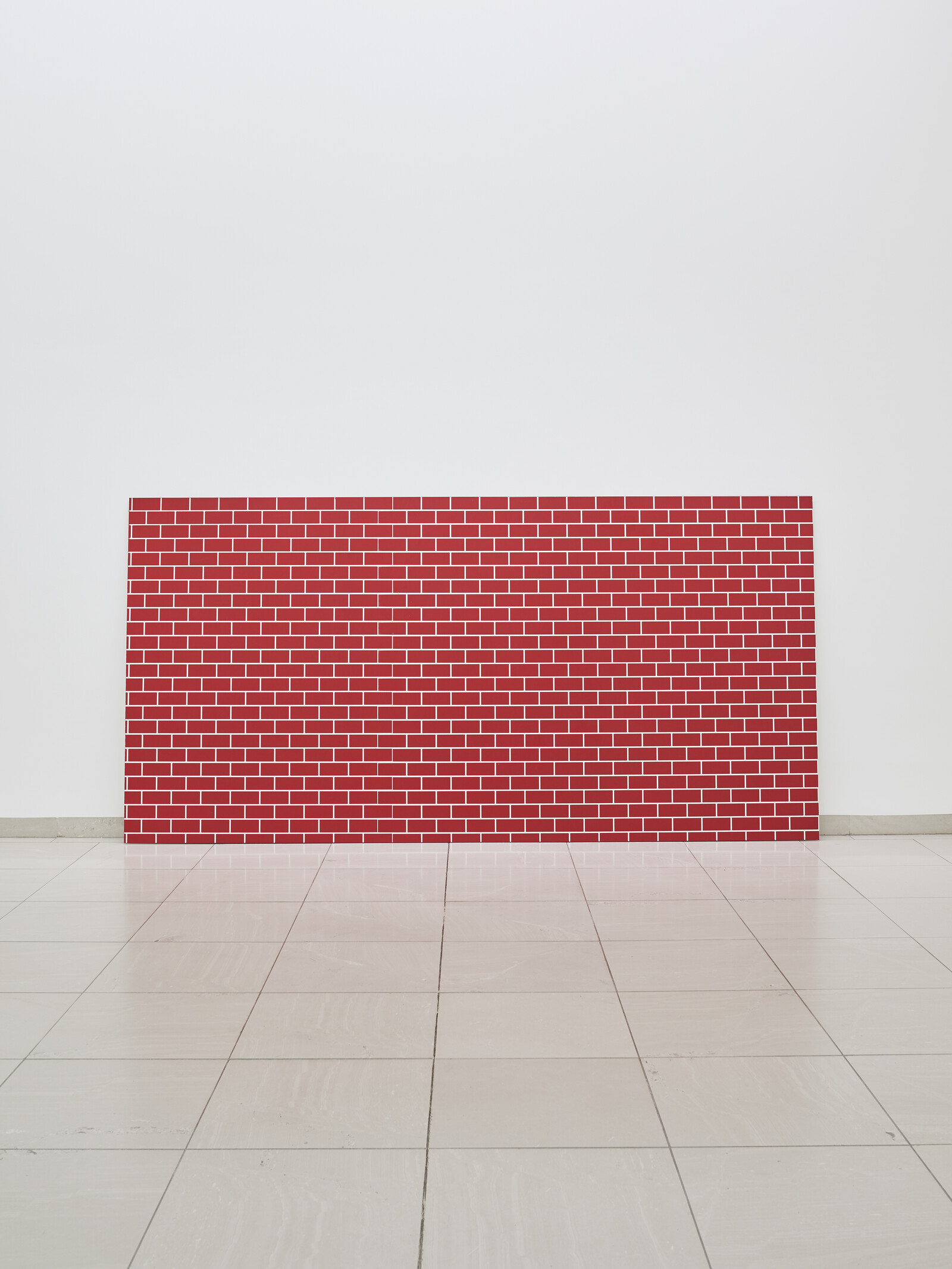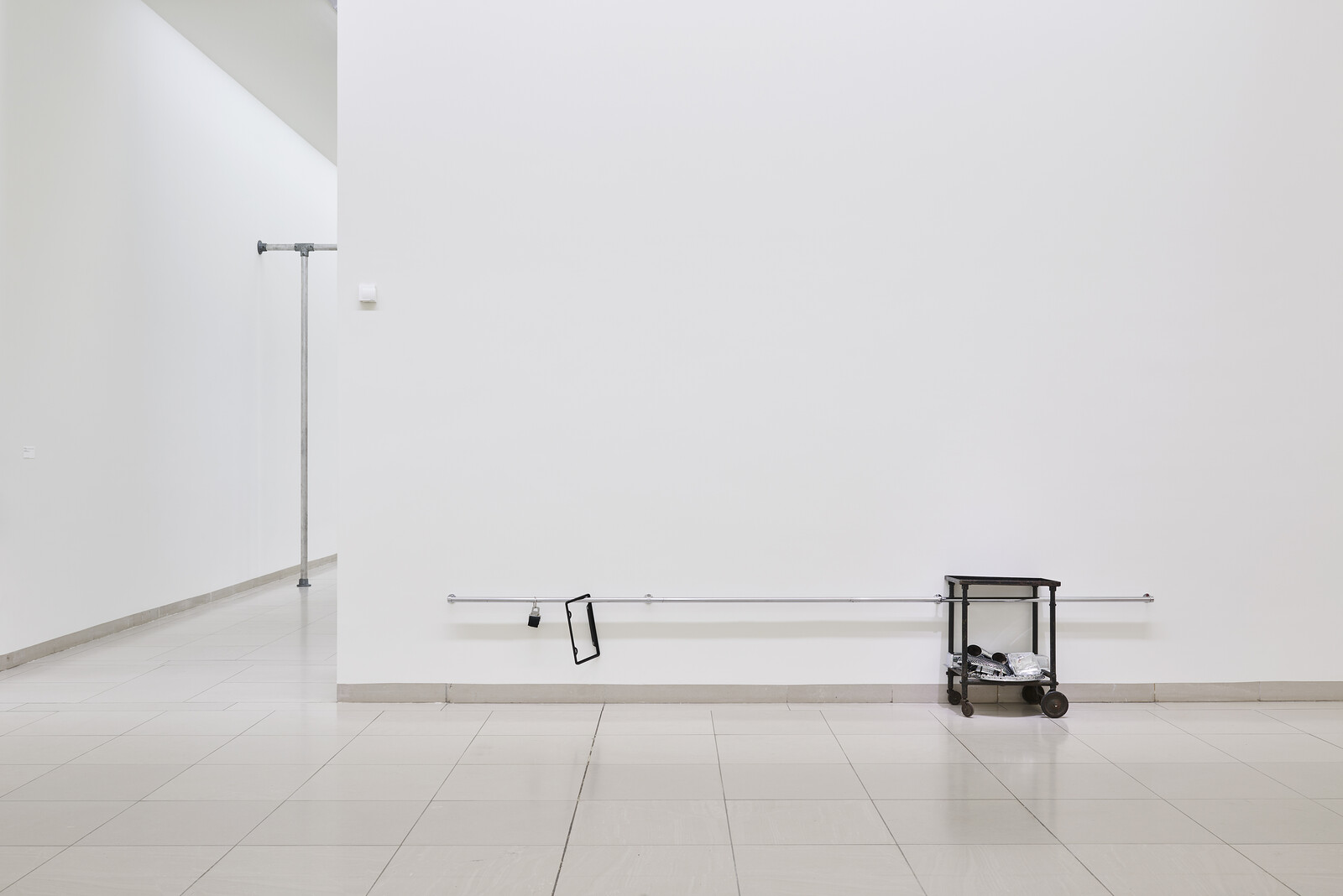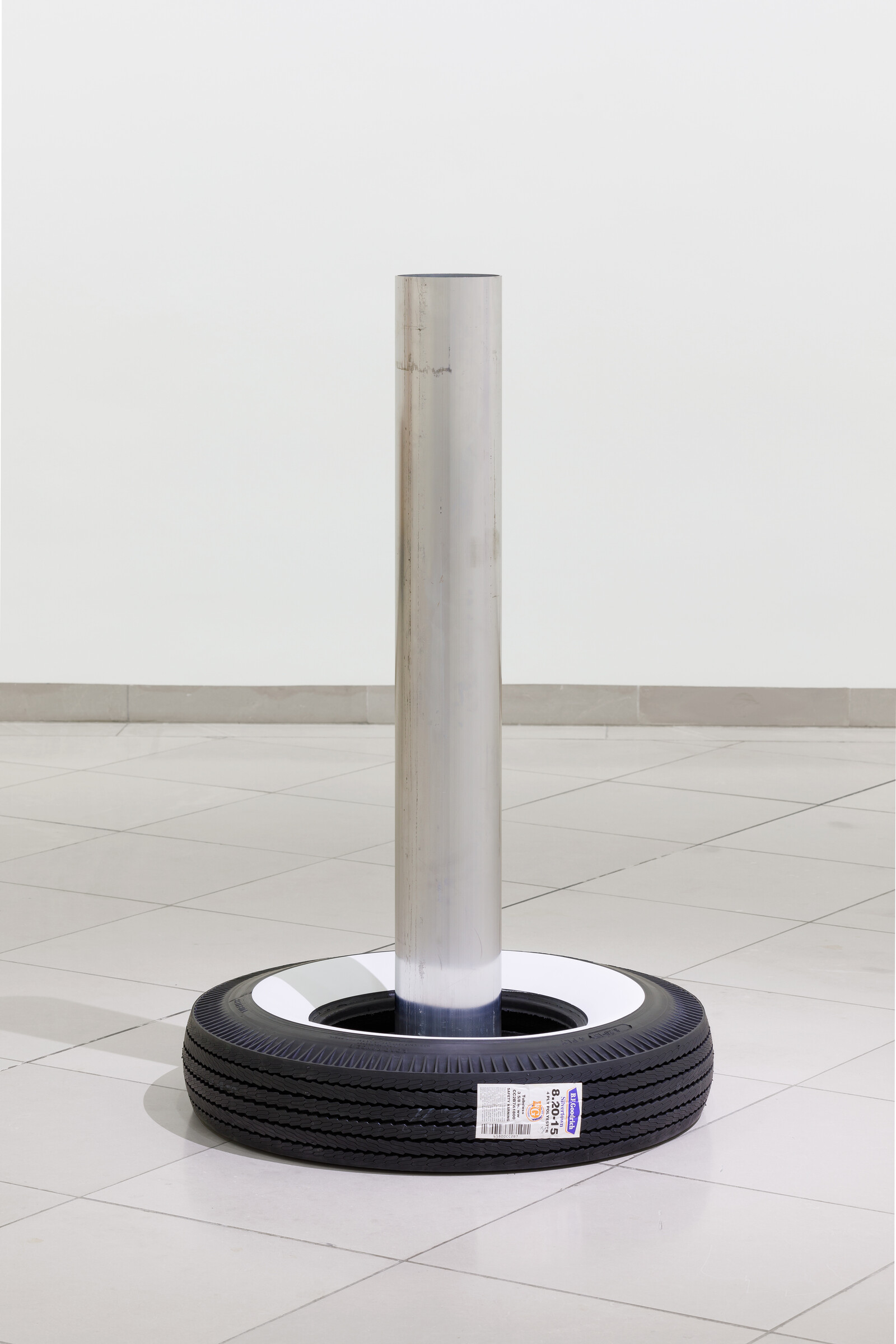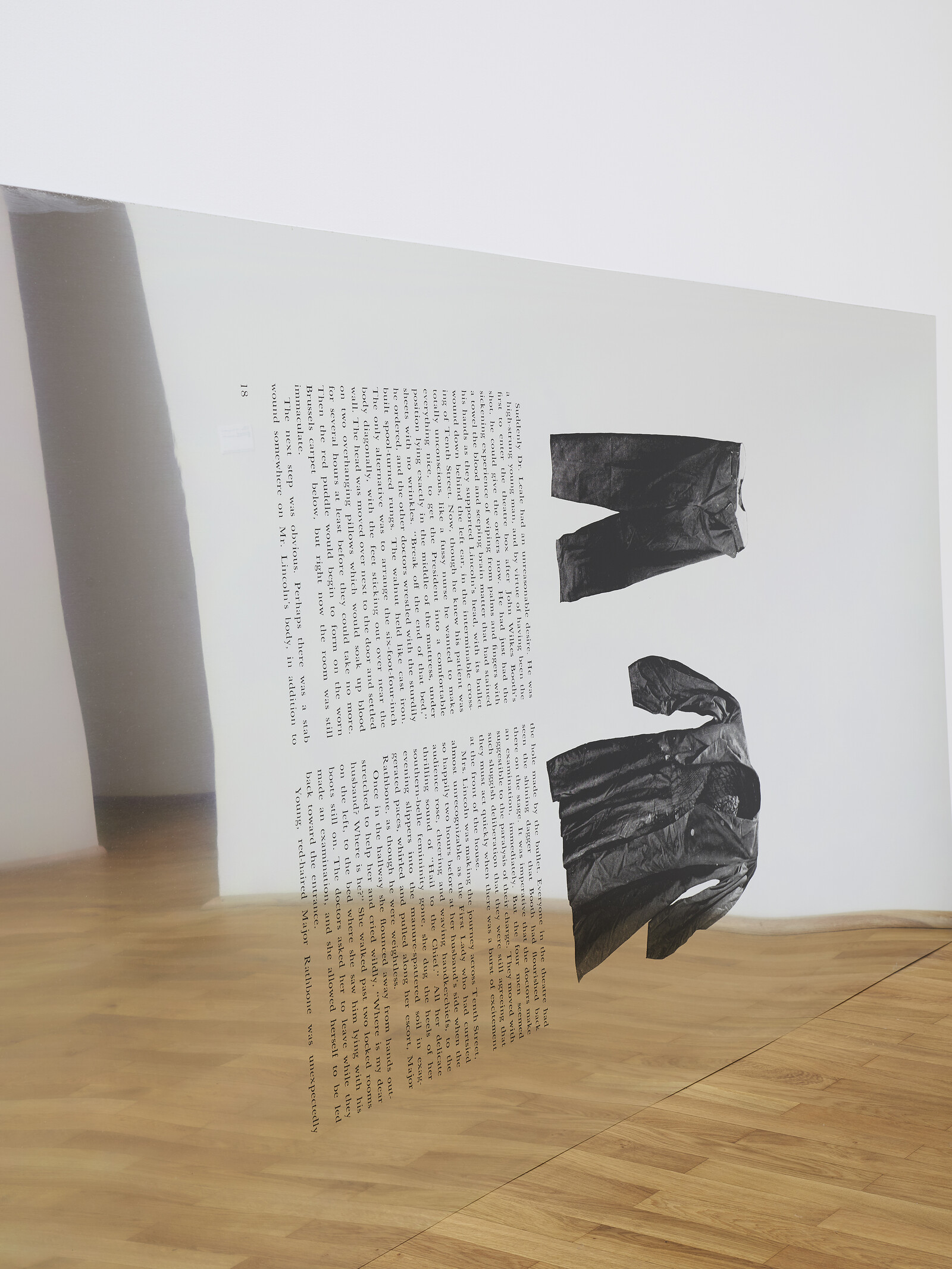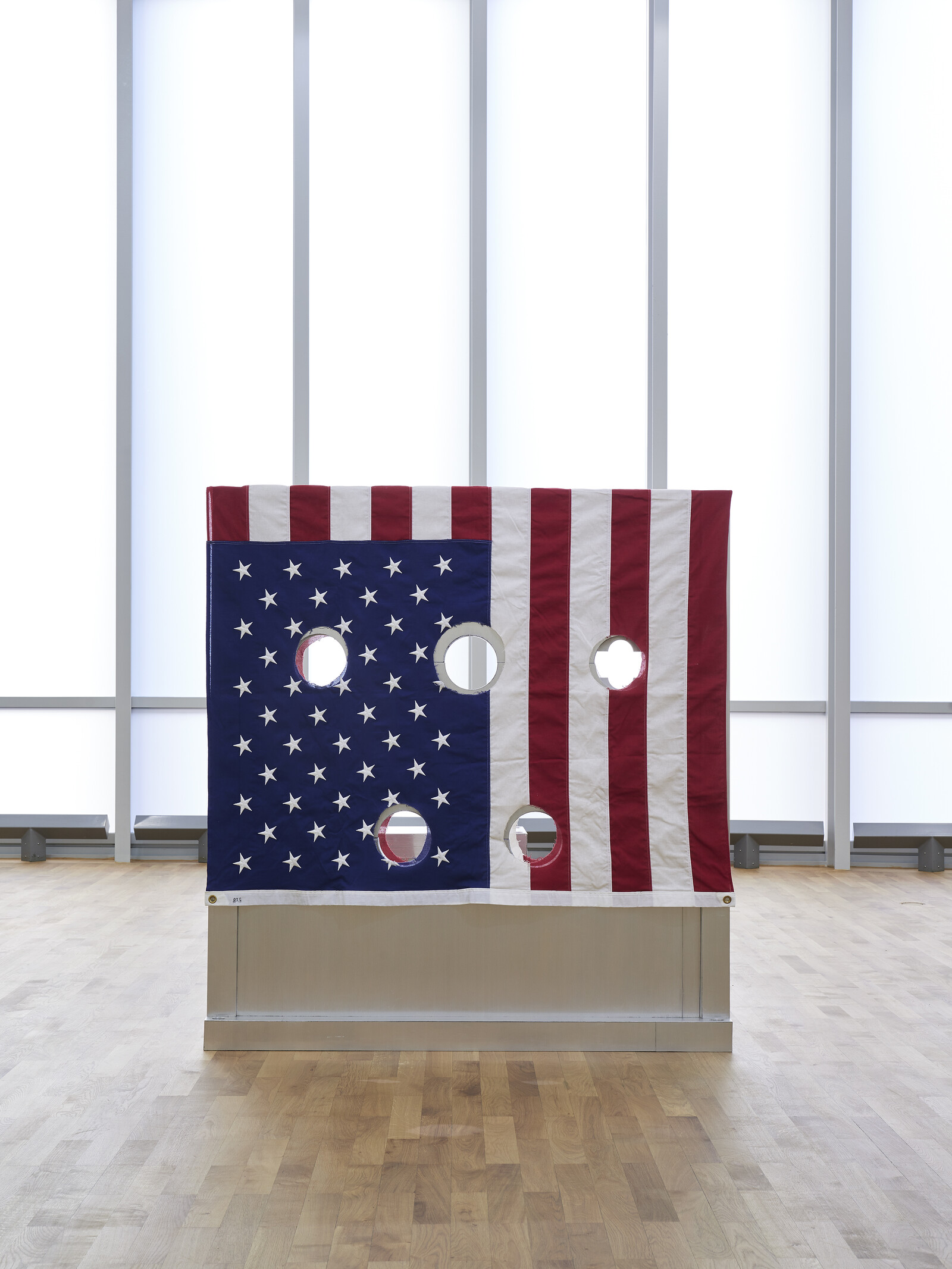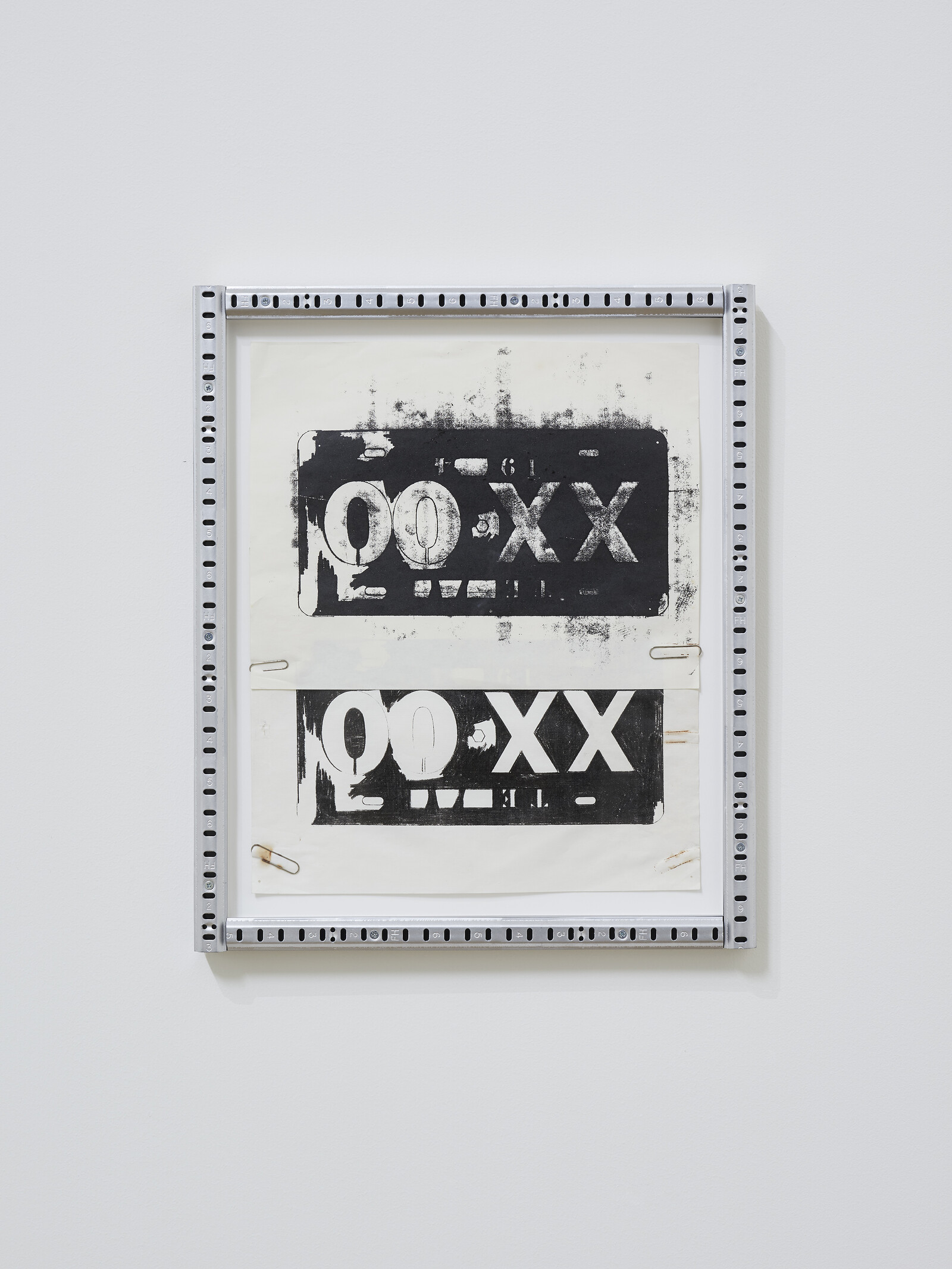A “gross internalization of the game at its most spartan” is how Cady Noland described the mechanism of psychopathy in her urtext “Towards a Metalanguage of Evil.”1 It’s one description of several in that cold read of power dynamics in 1980s America, that (it has been frequently noted) also apply to the artist’s own work. Her sculptures glint with something stark and cruelly observed, and include potent symbols that have been weaponized in the shaping of North America: guns, handcuffs, walls, flags, celebrities, and beer are orchestrated into cool metallic frameworks. One of art’s most famous absentees, Noland ceased to exhibit new work in the early 2000s, and has declined to make or authorize exhibitions for much of that time. That makes this grimly elegant survey show at Museum für Moderne Kunst (MMK), curated by Susanne Pfeffer, a rare event of some note. Magnificently executed, the exhibition features more than 80 works as well as a number of consonant works by artists in MMK’s collection such as Charlotte Posenenske, Andy Warhol, and Steven Parrino.
The brutal and asocial qualities of Noland’s work are accentuated by the particularities of MMK’s large isosceles exhibition spaces. Hans Hollein’s architecture, which has a viewing-machine quality that narrows and directs one’s gaze toward a perspectival point, takes on the qualities of firing ranges, shooting galleries, and gallows. Publyck Sculpture (1994), a large and intimidating sculpture in one of MMK’s grandest spaces on the ground floor, is an austere aluminum frame support for three large whitewall tires hanging from metal chains. The title has the occult spelling associated with Aleister Crowley and later Charles Manson, and the sculpture itself summons not so much the playfulness of a swing set but a gallows from which three bodies hang. In the room beyond, Tower of Terror (1993) is installed at the far end, a cast aluminum set of stocks designed to trap a person’s head, hands, and feet for public ridicule and pelting. In both areas, I have the sense that I am watching myself watch a violent spectacle. I’m the driver cravenly rubbernecking at the pile-up; I’m the gawping onlooker at a hanging.
The viewer as a gawker moves closer to specific personalities upstairs, in works such as Oozewald (1989), located the far end of a bright perspectival space. A body-shaped slice of freestanding aluminum has had a photograph of Lee Harvey Oswald at the moment of his shooting silkscreened onto it. The piece is riddled with neat circular holes into one of which a Coca-Cola cup and an American flag have been stuffed. Camera and bullet strike the man simultaneously, as he is murdered by a man who continued a founding American logic by taking the law into his own hands. The whitewall tire swing returns as image in another aluminum work, Trashing Folgers (1993/94), hanging over a messy outdoor scene of a yard strewn with garbage (including a can of Folgers coffee). The photograph’s caption, printed on the backside of the sculpture explains that it is an image of the Manson ranch. The hole at the center of the tire has been cut out of the metal, drawing eyes toward that unlikely object. The unbelievable young faces of women from the Manson Family appear on another work close by. Did they play on the swing? Did they drink coffee? Surely they must have had an awful ability to view people as objects, to kill them so gleefully, and easily?
“I don’t admire anyone,” said the writer Gary Indiana at a recent talk at SculptureCenter, in New York. “When I’m asked who I admire I say no one. Hate and admiration are two sides of the same coin. Someone who admires you today can hate you tomorrow.” Noland’s many closely hung silkscreen metal works dramatize that wisdom of adoration: the alarming Enquirer Page with Eyes Cut Out (1990), features a glamorous image of “lovebirds” Charlie’s Angels actress Jaclyn Smith and producer David Niven Jr. taken from The National Enquirer, silkscreened on metal with holes where the frames of their glasses should be, as well as the publication’s carping headline about the lack of time between this marriage and her last. Celebrity Trash Spill (1989), a scatter piece on the floor, includes cameras, sunglasses, and cigarettes as well as magazines and newspapers blaring news of Abbie Hoffman’s death. There’s a horrified fascination with the ability of humans to view each other as objects where necessary, an indictment that finds an extreme example in the Mansons. “You consume all these celebrities each week, then you turn them into trash,” Noland said in an interview.2 A week! It takes less than a second and a finger swipe today, and barely a moment’s thought.
Other works display deeper structural concerns, in spatial regulations, signs, barriers, and access. Basic aids to life such walkers, handrails, and prostheses commingle with gun holsters and the kind of pipe someone would carry with the intention of braining someone else. A work entitled Dead Space (1989) bifurcates one of the ground-floor spaces using scaffolding. One half of the space is left empty, while the other hosts a painting by Kenneth Noland (the artist’s late father) and another by her late friend Steven Parrino—it’s unclear which space has been pronounced “dead,” only that the barrier kills it. There are cages, brick walls, and chain-link fences, barriers, tax data, guns, and handcuffs: bald and bare expressions of American atrocity, with the additional insult of their literalness in 2019. Kids in literal cages. A literal wall. Given all of this exhausting resonance, then, why should my experience of this exhibition have been so sharp and bright? Because it’s cathartic to see the back-end as well as the interface, and to see aesthetic force applied to recognize things as they are.
Cady Noland, “Towards a Metalanguage of Evil,” Balcon No. 4 (1989). See https://mathisgasser.wordpress.com/2018/01/27/cady-noland-towards-a-metalanguage-of-evil/.
Michele Cone, “Cady Noland interviewed,” Journal of Contemporary Art (Fall 1990), see http://www.jca-online.com/noland.html.
